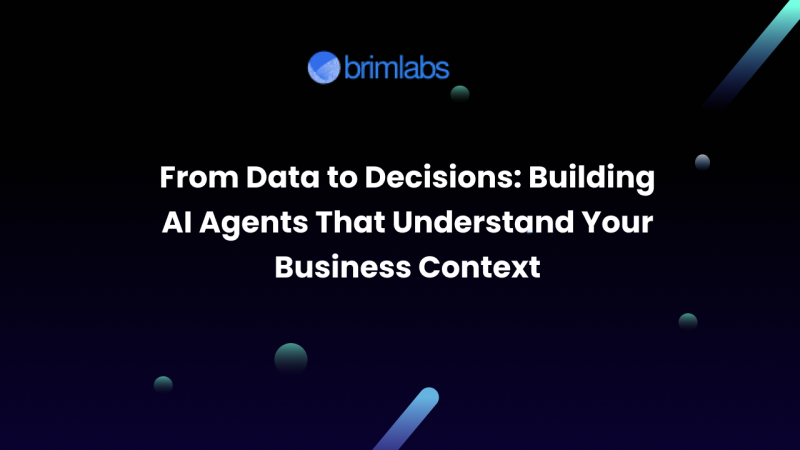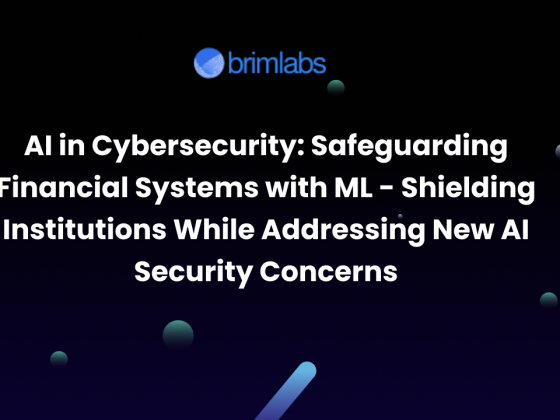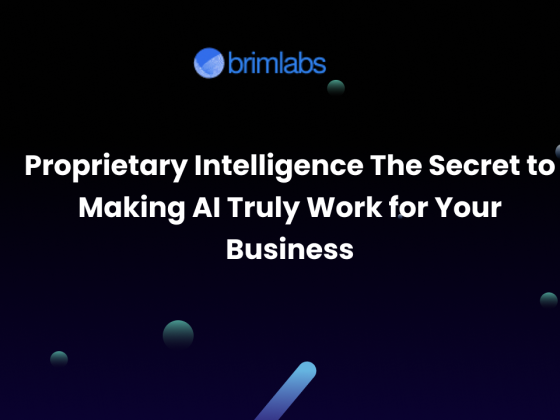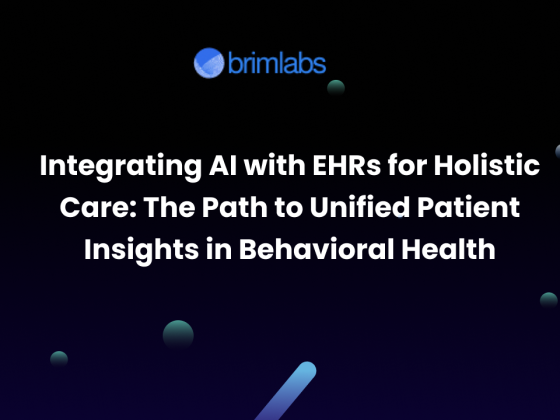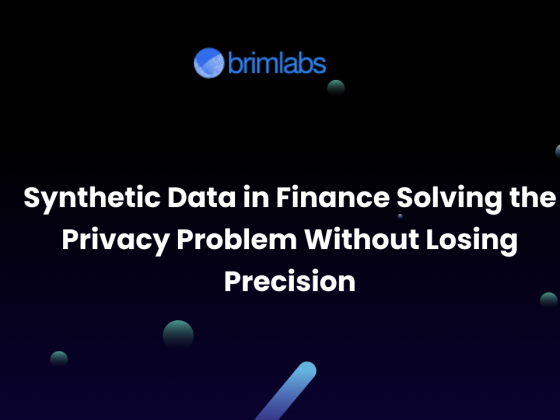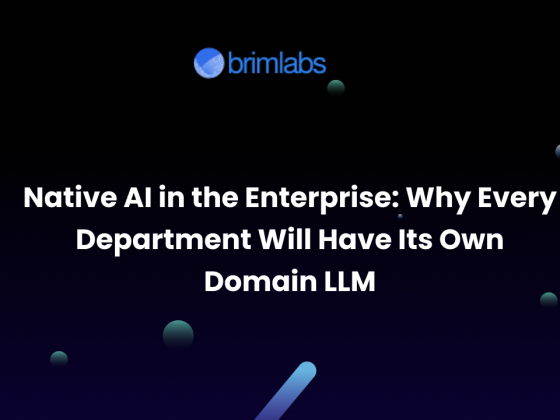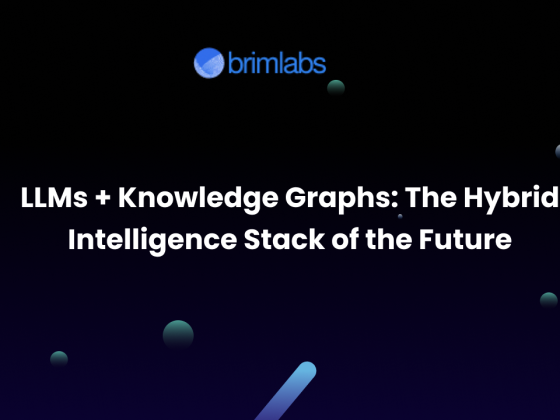AI is everywhere, from drafting emails to coding assistants. But the real leap forward isn’t just generative AI producing text or images. It’s AI Agents that can understand, reason, and act within your unique business context.
Yet, here’s the challenge: raw AI without context is noise. A generic model can write a paragraph, but can it evaluate a claim, recommend a pricing adjustment, or flag a compliance risk in your company? Not without context.
This blog dives into how enterprises can go from raw data to intelligent decisions, by building AI Agents that are deeply grounded in their business workflows, rules, and goals.
Why Business Context Matters
AI without a business context is like hiring a consultant who has read every book but never studied your industry. It can generate ideas, but not decisions you can trust.
Business context ensures AI Agents:
- Interpret correctly: understanding terms, metrics, and jargon unique to your industry.
- Act responsibly: respecting policies, regulations, and internal guardrails.
- Drive outcomes: focusing on KPIs that matter to your P&L.
Stat to note: According to McKinsey’s 2025 AI report, 68% of companies say lack of contextualization is the #1 reason their AI pilots underperform. Generic models can’t bridge the gap between theoretical capability and business value.
From Raw Data to Context-Aware Agents
Building AI Agents that understand your business context requires moving through 3 layers of transformation:
1. Data Foundation: Clean, Governed, Accessible
Data is the raw fuel, but most organizations underestimate how unprepared their data is for AI.
- Data readiness gap: Over 50% of enterprises admit their data is not AI-ready, plagued by silos, poor quality, or weak governance.
- Governance gap: Only 25% have full AI governance frameworks, leaving them unable to scale responsibly.
- Security risk: 90% of enterprises are underprepared for AI-related cyber threats, creating compliance and trust issues.
A solid data foundation means:
- Cleaning and labeling historical datasets.
- Consolidating silos into unified data pipelines.
- Applying permissioning, lineage, and access controls.
Without this, AI Agents become “hallucination machines,” producing guesses instead of insights.
2. Business Rules & Domain Knowledge
Next, raw data must be combined with rules, processes, and policies that shape decision-making.
Examples of business context encoding:
- Banking: Credit approval agents must align with KYC, AML, and lending policies.
- Healthcare: Agents must adhere to HIPAA, GDPR, and clinical protocols.
- E-commerce: Pricing agents must follow margin thresholds and dynamic pricing rules.
Context can be layered through:
- Knowledge bases: internal policies, SOPs, and playbooks.
- Ontologies: domain-specific vocabularies mapping how terms and entities relate.
- Guardrails: constraints that define what actions agents can or cannot take.
3. Decisioning Layer: From Insights to Actions
Once agents have clean data and business context, they must be wired to act. This is the decisioning layer, where predictions translate into workflows and outcomes.
Capabilities include:
- Autonomous reasoning: agents planning multi-step actions across systems.
- Tool use: invoking APIs, databases, and apps to execute tasks.
- Feedback loops: incorporating human feedback to refine future decisions.
Think of it as moving from “What does the data say?” to “What should we do next?”
Real-World Case Studies
Case 1: AI Agents in Healthcare Operations
A US healthcare provider built AI Agents to automate insurance claim triage.
- Data inputs: structured patient records, insurance codes, and historical claims.
- Context: reimbursement policies, compliance regulations, and fraud detection rules.
- Outcome: claim resolution time dropped by 45%, while error rates fell below 1%.
The agent didn’t just process claims; it understood the healthcare business context, ensuring compliance and reducing costly rejections.
Case 2: Fintech Compliance Agents
A fintech platform deployed AI Agents for AML monitoring.
- Data inputs: transaction data, customer profiles.
- Context: KYC rules, AML policies, international regulatory frameworks.
- Outcome: onboarding reduced from 3 weeks to 2 days, compliance costs cut by 40%.
Business context allowed the agent to flag anomalies in the right context, not just unusual patterns, but unusual patterns relative to regulatory thresholds.
Case 3: E-commerce Personalization Agents
An online retailer used AI Agents for real-time personalization.
- Data inputs: purchase history, browsing behavior, seasonal demand.
- Context: inventory rules, margin constraints, customer segment policies.
- Outcome: repeat purchase rate increased by 18% in 6 months.
Without a business context, recommendations might have been attractive but unprofitable. By encoding margin rules and stock levels, the AI only promoted profitable and available products.
The Economics of Contextual AI Agents
Building context-aware AI Agents changes the economics of business decisions.
- Faster outcomes: Context shortens decision cycles from weeks to hours.
- Lower costs: Automating rule-based decisions reduces manual overhead by 30–50%.
- Higher ROI: Personalized, context-rich experiences improve retention and upselling.
Example: A global insurer reduced claims handling costs by 42% using contextual AI Agents, while also improving compliance accuracy.
Challenges in Building Context-Aware Agents
Despite the upside, challenges remain.
- Data readiness: Many enterprises lack clean, accessible data.
- Integration complexity: Embedding agents into existing workflows is harder than building proof-of-concepts.
- Governance: Few companies have clear policies on agent autonomy, risk tolerance, and human oversight.
- Measurement: Without clear ROI metrics, impact can’t be quantified.
Blueprint for Building AI Agents That Understand Context
Step 1: Define Business Outcomes
Tie AI projects to P&L outcomes. Instead of “build a chatbot,” frame goals like “reduce claims handling time by 30%” or “increase conversion by 10%.”
Step 2: Build a Data Foundation
- Consolidate data pipelines.
- Apply governance, security, and access rules.
- Ensure real-time data flows where possible.
Step 3: Encode Business Rules
- Create knowledge bases from SOPs and policies.
- Use ontologies to formalize domain-specific terms.
- Define guardrails and risk boundaries.
Step 4: Deploy Decisioning Frameworks
- Use orchestration tools to connect agents with APIs and databases.
- Introduce human-in-the-loop for high-risk tasks.
- Implement continuous monitoring and feedback loops.
Step 5: Measure and Scale
- Track metrics like cost-to-serve, decision cycle time, revenue lift, and compliance accuracy.
- Scale agents to adjacent workflows once ROI is proven.
Metrics That Matter
When presenting to boards and CFOs, track metrics that tie directly to economics:
- Efficiency: average decision cycle time, % of automated steps.
- Revenue: conversion rates, upsell rates, repeat purchases.
- Risk & compliance: error rates, violations prevented, audit readiness.
- Adoption: active users, acceptance of AI recommendations, and feedback incorporation speed.
Market Outlook
- By 2028, IDC estimates $632B in AI spending, with contextual AI Agents commanding a growing share.
- Deloitte predicts widespread enterprise adoption of AI Agents in 2025, with context-rich applications leading the way.
- McKinsey estimates trillions in annual value could be unlocked across industries by embedding AI into decision-making.
The signal is clear: contextual AI Agents are the future of enterprise decision-making.
Conclusion: From Data to Decisions
AI that doesn’t understand your business context is just noise. But AI Agents built on your data, rules, and goals become decision accelerators, helping you act faster, safer, and smarter.
- Data without context = information.
- Data + context = decisions.
- Decisions at scale = ROI.
At Brim Labs, we specialize in building context-aware AI Agents that deliver real outcomes in 8–12 weeks. Whether in compliance, customer operations, or revenue growth, we help companies move from raw data to contextual decisions that matter.

